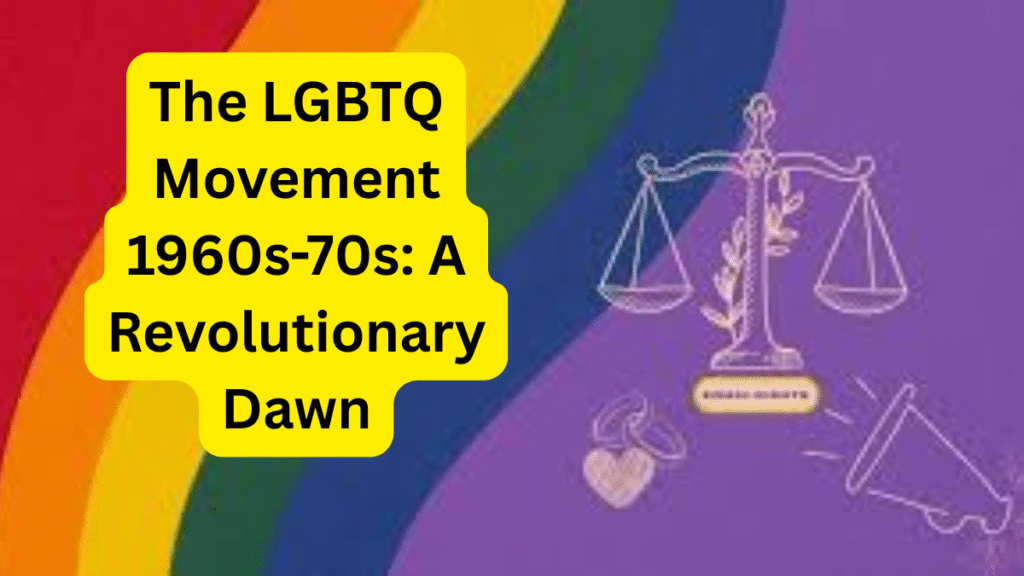The LGBTQ movement of the 1960s and 1970s was a period of radical transformation, marked by explosive rebellion, strategic organizing, and the birth of modern queer identity. This era shifted the struggle from quiet pleas for acceptance to loud, proud demands for liberation. It was a direct response to systemic oppression, most famously ignited by the 1969 Stonewall Riots, and it laid the entire groundwork for the rights and visibility the community has today. This article explores the key events, groups, and legacy of this pivotal time in history.
The Roots of Rebellion: Pre-Stonewall Foundations
Before the flashpoint of Stonewall, seeds of resistance were already growing. The 1950s-era “homophile” groups, like the Mattachine Society and the Daughters of Bilitis, advocated for gay rights through education and polite protest. However, the more radical, anti-war, and feminist atmospheres of the 1960s created a new generation ready for confrontation.
Key Early Organizations and Actions
- The Mattachine Society: One of the first sustained gay rights groups in the U.S., focused on assimilation and proving homosexuals were upstanding citizens.
- Annual Reminder Day Pickets: Held from 1965-1969 at Independence Hall in Philadelphia, these were some of the first organized public demonstrations for gay rights, demanding equality and fair treatment.
The Stonewall Uprising: The Spark That Ignited a Movement
The single most catalytic event of the gay liberation movement was the Stonewall Riots. In the early hours of June 28, 1969, police raided the Stonewall Inn, a gay bar in New York City’s Greenwich Village. Such raids were common, but on this night, the patrons—including drag queens, transgender women of color, and homeless youth—fought back.
Why Stonewall Was Different
The resistance lasted for several days. It was a spontaneous, violent, and powerful rejection of perpetual police harassment. The energy from this rebellion needed an outlet, leading to the formation of new, radical organizations that embraced direct action over passive pleading.
Building Power: Major Organizations and Their Goals
The post-Stonewall energy rapidly coalesced into formal groups with distinct philosophies, moving the LGBTQ movement 1960s-70s forward.
The Gay Liberation Front (GLF)
Formed immediately after Stonewall, the GLF was radical and revolutionary. Their name was a direct nod to the Vietnamese National Liberation Front, aligning with broader anti-establishment and leftist movements. They fought for the complete dismantling of oppressive systems, not just gay rights.
The Gay Activists Alliance (GAA)
Frustrated with the GLF’s broad political focus, the GAA split off to concentrate exclusively on LGBTQ issues. They perfected the “zap”—a confrontational, non-violent tactic of surprising public officials to demand attention for gay rights. They are credited with popularizing the Greek letter lambda (λ) as a symbol of liberation.
Lasting Legacy and Cultural Shifts
The activism of this era produced tangible results and a profound cultural shift that echoes today.
| Era | Achievement | Impact |
|---|---|---|
| Early 1970s | Declassification of homosexuality as a mental illness by the APA (1973) | A monumental victory against pathologization |
| 1970s | First openly gay elected officials (e.g., Harvey Milk) | Proved political power and visibility were possible |
| 1970s | Explosion of gay publications, community centers, and pride parades | Built infrastructure and fostered a shared identity |
The movement also saw the rise of lesbian feminism and the beginnings of a organized transgender rights movement, though these groups often faced marginalization within the broader cause.
How to Learn More About This Pivotal Era
Engaging with primary sources is the best way to understand this history. Here’s a step-by-step guide to conducting your own research:
- Start with Digital Archives: Visit the Digital Public Library of America (DPLA) or ONE Archives at the USC Libraries website.
- Use Specific Search Terms: Search for “Gay Liberation Front manifestos,” “Stonewall Riots photographs,” or “Gay Activists Alliance zaps.”
- Explore Academic Journals: Use Google Scholar to find peer-reviewed articles on “1960s homophile movement” or “1970s lesbian feminism.”
- Visit Local LGBTQ Centers: Many physical community centers have historical libraries or can direct you to local resources.
- Watch Documentaries: Films like Stonewall Uprising (2010) or The Death and Life of Marsha P. Johnson (2017) provide powerful visual context.
Frequently Asked Questions (FAQ)
Q: What was the main goal of the LGBTQ movement in the 1960s?
A: Pre-Stonewall, the goal was primarily social acceptance and challenging the classification of homosexuality as a illness. Post-Stonewall, the goal radically shifted to liberation, visibility, and confronting systemic oppression head-on.
Q: Who were some key leaders of the movement?
A: While largely a collective effort, iconic figures include Marsha P. Johnson and Sylvia Rivera (transgender rights activists and Stonewall veterans), Brenda Howard (the “Mother of Pride”), and Frank Kameny, who pioneered pre-Stonewall activism.
Q: How did the movement address race and gender?
A: Initially, the movement was often dominated by white, gay men. Women and people of color frequently had to fight sexism and racism within the community, leading to the formation of their own groups like the Combahee River Collective (Black feminists) and S.T.A.R. (Street Transvestite Action Revolutionaries).
Q: What is the connection between this era and modern Pride Month?
A: The first Christopher Street Liberation Day March was held on the one-year anniversary of the Stonewall Riots (June 1970). This annual commemoration evolved into the global Pride celebrations we know today.
Continue Your Journey of Discovery
The fight for equality is built on the foundation of history. To dive deeper into the stories and strategies of the brave activists from the LGBTQ movement 1960s-70s, visit the LGBTQ History Archive on our website or contact your local LGBTQ community center for educational programs and resources.
Contact & Resources:
- ONE Archives at the USC Libraries: https://one.usc.edu
- GLBT Historical Society: https://www.glbthistory.org
#Stonewall #LGBTQHistory #GayLiberation #Pride #Activism
